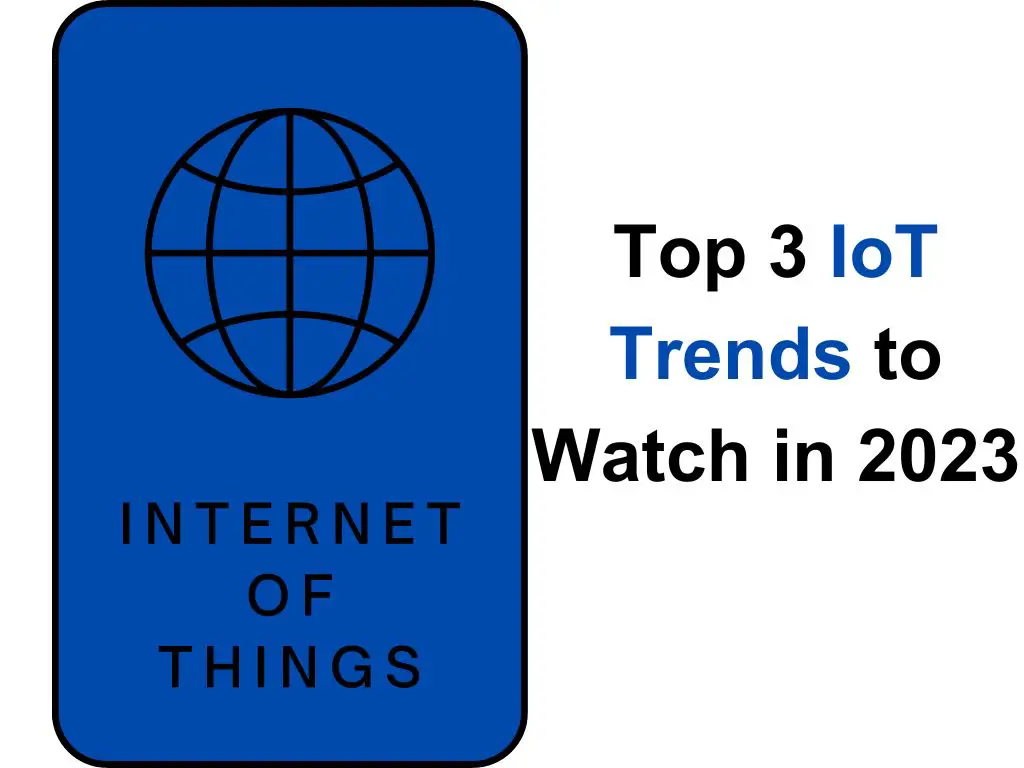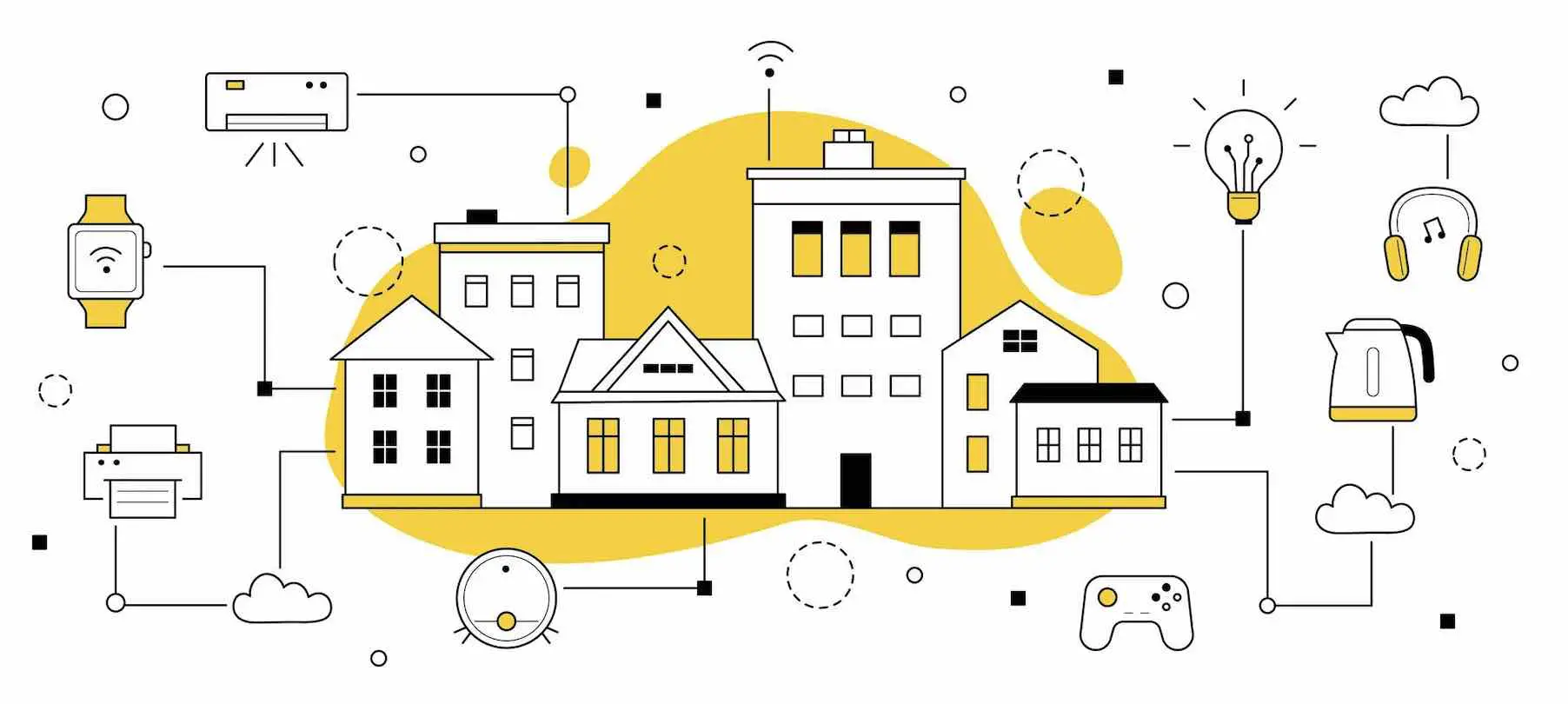Introduction:
The Internet of Things (IoT) is a network of interconnected devices that can communicate with one another and exchange data. This technology has already transformed many industries, from healthcare to manufacturing, and it is expected to continue its rapid growth in the years to come.
In this article, we will discuss the Top 3 IoT (Internet of Things) Trends To Watch In 2023.
1. Edge Computing:
Edge computing is a distributed computing paradigm that brings computation and data storage closer to the devices that generate and use the data. Instead of sending all data to a centralized cloud server for processing, edge computing allows data to be processed and analyzed locally, at the edge of the network, on devices such as routers, gateways, and sensors.
The importance of edge computing in IoT lies in its ability to address some of the key challenges associated with traditional cloud-based computing. One of these challenges is latency, which refers to the delay between the time data is generated and the time it is processed. With edge computing, data can be processed in real-time, reducing latency and enabling faster decision-making.
Another challenge is bandwidth, which refers to the amount of data that can be transmitted over a network. With the increasing number of IoT devices generating large amounts of data, traditional cloud-based computing can quickly become overwhelmed. Edge computing reduces the amount of data that needs to be transmitted to the cloud, reducing bandwidth requirements and improving network efficiency.
edge computing is an important development in IoT because it enables faster, more efficient, and more secure processing of data, bringing us closer to realizing the full potential of IoT.
Edge computing can improve IoT devices and applications in several ways, including:
1. Reduced latency: By processing data closer to the source, edge computing can reduce the latency associated with sending data to a centralized cloud server. This is particularly important for applications that require real-time processing, such as autonomous vehicles or industrial automation.
2. Improved reliability: Edge computing can improve the reliability of IoT devices and applications by reducing the risk of network downtime or disruptions. By processing data locally, devices can continue to operate even if the network connection is lost.
3. Enhanced privacy and security: Edge computing can improve privacy and security by minimizing the amount of data that needs to be transmitted over the network. This reduces the risk of data breaches or cyber attacks, as sensitive data can be processed and stored locally, rather than being sent to a centralized cloud server.
4. Cost savings: Edge computing can help reduce the cost of IoT devices and applications by reducing the need for expensive cloud-based infrastructure. By processing data locally, devices can operate with minimal network connectivity, reducing the need for expensive data plans or high-speed internet connections.
edge computing has the potential to significantly improve the performance, reliability, and security of IoT devices and applications, making them more efficient and cost-effective.
Combining edge computing and IoT in 2023 has the potential to bring several benefits, including:
1. Faster and more efficient data processing: By processing data locally at the edge of the network, IoT devices can perform real-time data processing and analysis, reducing latency and improving response times.
2. Improved reliability and availability: Edge computing can improve the reliability and availability of IoT devices by reducing the dependence on cloud-based infrastructure. By processing data locally, devices can continue to operate even if the network connection is lost.
3. Enhanced security and privacy: Edge computing can enhance security and privacy by reducing the amount of data that needs to be transmitted over the network. Sensitive data can be processed and stored locally, reducing the risk of data breaches or cyber attacks.
4. Cost savings: Edge computing can help reduce the cost of IoT devices and applications by reducing the need for expensive cloud-based infrastructure. By processing data locally, devices can operate with minimal network connectivity, reducing the need for expensive data plans or high-speed internet connections.
5. Improved scalability: Edge computing can improve scalability by enabling IoT devices to process data locally and share only the relevant information with the cloud. This reduces the load on cloud-based infrastructure, making it easier to scale IoT deployments as needed.
Combining edge computing and IoT in 2023 has the potential to significantly improve the performance, reliability, security, and scalability of IoT devices and applications, making them more efficient and cost-effective.
2. 5G and IoT:
5G networks are the next generation of mobile networks that promise to deliver faster speeds, lower latency, and higher bandwidth than previous generations.
One of the key benefits of 5G networks is their ability to support massive machine-type communications (mMTC), which refers to the communication between a large number of low-power, low-cost IoT devices. 5G networks can support up to one million devices per square kilometer, compared to the 4G limit of around 100,000 devices per square kilometer. This makes it possible to deploy large-scale IoT networks with a high density of connected devices.
Another benefit of 5G networks is their ability to support ultra-reliable low-latency communications (URLLC), which is critical for applications that require real-time processing, such as autonomous vehicles or industrial automation. 5G networks can deliver latency as low as one millisecond, compared to the 4G latency of around 50 milliseconds. This makes it possible to deploy real-time applications with high reliability and low latency.
The importance of 5G networks in IoT lies in their ability to support the massive amounts of data generated by the growing number of connected devices, while providing faster speeds, lower latency, and higher bandwidth. This makes it possible to deploy large-scale IoT networks with a high density of connected devices and real-time applications that require high reliability and low latency.
5G networks can improve IoT devices and applications in several ways, including:
1. Faster data transfer: 5G networks can provide faster data transfer speeds, allowing IoT devices to transmit and receive data more quickly. This is particularly important for applications that require real-time processing, such as autonomous vehicles or industrial automation.
2. Lower latency: 5G networks can provide lower latency, reducing the delay between the time data is generated and the time it is processed. This is important for applications that require real-time processing, such as remote surgery or virtual reality.
3. Increased reliability: 5G networks can provide increased reliability by supporting ultra-reliable low-latency communications (URLLC). This is important for applications that require high reliability and low latency, such as industrial automation or critical infrastructure.
4. Improved scalability: 5G networks can improve scalability by supporting massive machine-type communications (mMTC), allowing a large number of low-power IoT devices to connect to the network. This is important for applications that require a high density of connected devices, such as smart cities or environmental monitoring.
5. Enhanced security: 5G networks can enhance security by providing stronger encryption and authentication mechanisms. This is important for applications that require high levels of security, such as healthcare or financial services.
In 2023, 5G will be used in various IoT applications, including autonomous vehicles, smart cities, and industrial IoT.
Also Read: What is Fog Computing? How is it Used in Machine Learning?
3. Cybersecurity in IoT:
Cybersecurity is a critical component of IoT because of the potential risks associated with the large amount of data generated and exchanged by connected devices. IoT devices can be vulnerable to cyber attacks, which can result in data breaches, privacy violations, and other security threats.
The role of cybersecurity in IoT is to protect connected devices, networks, and data from these threats. This involves implementing security measures such as encryption, authentication, and access control to ensure that only authorized users have access to sensitive data.
Another important aspect of cybersecurity in IoT is the need for continuous monitoring and updating of security measures. As new threats emerge, it is important to stay up-to-date with the latest security protocols and to regularly update devices and networks to ensure that they are protected against new vulnerabilities.
The role of cybersecurity in IoT is critical to ensure that connected devices and networks are secure and protected from cyber threats. Without proper cybersecurity measures in place, IoT devices can be vulnerable to attacks that can have serious consequences for individuals, organizations, and society as a whole.
Cybersecurity can improve IoT devices and applications in several ways, including:
1. Protecting sensitive data: Cybersecurity measures such as encryption and access control can protect sensitive data generated by IoT devices, such as personal health information or financial data.
2. Preventing unauthorized access: Cybersecurity measures can prevent unauthorized access to IoT devices and networks, reducing the risk of cyber attacks and data breaches.
3. Enhancing reliability: Cybersecurity measures can enhance the reliability of IoT devices and applications by ensuring that they are protected against cyber threats. This reduces the risk of downtime or disruptions that can result from cyber attacks.
4. Improving trust: Cybersecurity measures can improve trust in IoT devices and applications by ensuring that they are secure and protected against cyber threats. This can increase user adoption and confidence in IoT technologies.
5. Reducing liability: Cybersecurity measures can reduce liability for organizations that deploy IoT devices and applications by protecting against data breaches and other security threats. This can help reduce the risk of legal action or reputational damage.
cybersecurity is critical to ensuring that IoT devices and applications are secure, reliable, and trusted. By implementing cybersecurity measures, organizations can protect sensitive data, prevent unauthorized access, enhance reliability, improve trust, and reduce liability associated with IoT deployments.
Combining Cybersecurity and IoT in 2023 has the potential to bring several benefits, including:
1. Improved data protection: By integrating cybersecurity measures into IoT devices and networks, organizations can better protect sensitive data generated by connected devices, reducing the risk of data breaches and privacy violations.
2. Enhanced network security: Cybersecurity measures can enhance the security of IoT networks, reducing the risk of cyber attacks and unauthorized access to connected devices.
3. Increased reliability: By protecting against cyber threats, cybersecurity measures can improve the reliability of IoT devices and applications, reducing the risk of downtime or disruptions.
4. Improved compliance: By integrating cybersecurity measures into IoT deployments, organizations can better comply with data protection regulations and other security standards.
5. Increased trust: By ensuring that IoT devices and applications are secure and protected against cyber threats, organizations can increase user trust in these technologies, leading to greater adoption and usage.
combining Cybersecurity and IoT in 2023 has the potential to significantly improve the security, reliability, compliance, and trustworthiness of IoT devices and applications. This can help organizations better protect sensitive data, reduce the risk of cyber attacks, and increase user adoption of IoT technologies.
Also Read: AI and Cybersecurity
Conclusion:
The field of IoT is constantly evolving, with new devices, applications, and platforms emerging on a regular basis.
By keeping up with latest IoT trends, individuals and organizations can stay informed about the latest developments in the field, including new technologies, emerging standards, and best practices for IoT deployment and management. This can help them make informed decisions about which IoT devices and applications to deploy, how to manage them, and how to optimize their performance.
By understanding the latest developments in IoT technology, organizations can identify new use cases for connected devices and develop innovative solutions that meet the needs of their customers.



